5 Tips for Making Successful Commitments that Produce Results
Anne M. Bachrach
Don’t Lose Your Shirt
When Raising Your Fees
Frederick J. Esposito, Jr.
Understanding and Working with Anxiety
Jeena Cho
7 Steps to Improving Nonverbal Communication
Jeff Wolf
3 Marketing Systems Your Business Needs for Maximum Revenue
Jeremy Reeves

Nurturing Relationships— Building Business by Staying in Touch
Kimberly Alford Rice
6 Key Numbers Every Lawyer Should Know About Their Law Firm
Rjon Robins
6 Steps for Avoiding HR Headaches and Employment Issues
Robert Lehrer
Attorney of the Month
From Family to Firm
Brothers, LLP
Macyh Nawaey The Injury
San Diego
SAN DIEGO
246, 2024 $6.95
Volume



• $22,659,551 settlement for clients defrauded in a local Ponzi scheme in Levin v. Chicago Title, et al. (2021)(Michael Kirby & Jason Kirby).
• Complete defense jury verdict in real estate dispute and more than $400,000 collected for attorneys’ fees and costs in Batter v. McElhinney, et al. (2019)(Jason Kirby).
• $2.1 million jury verdict for firm client in Doe v. San Diego Unified School District, et al. (2018)(Jason Kirby & Michael Kirby).
• $1.1 million arbitration award for firm clients on cross-complaint after zeroing plaintiff on $6 million damage claim in Step Strategy Advisors v. Solid Gold Health Products for Pets, Inc., et al. (2018)(Jason Kirby lead counsel).








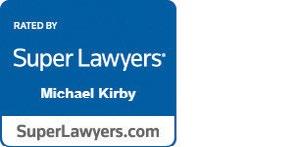


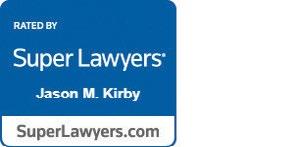
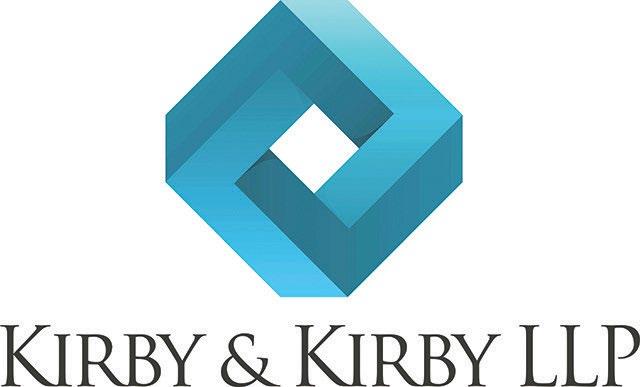
501 West Broadway | Suite 1720 | San Diego, CA 92101 | 619-487-1500 | www.kirbyandkirbylaw.com
SPECIALIZING IN COMPLEX BUSINESS LITIGATION BET-THE-COMPANY CASES OVER 65 YEARS OF COMBINED EXPERIENCE REFERRALS/SUBSTITUTIONS ACCEPTED AT ALL STAGES OF LITIGATION, INCLUDING TRIAL


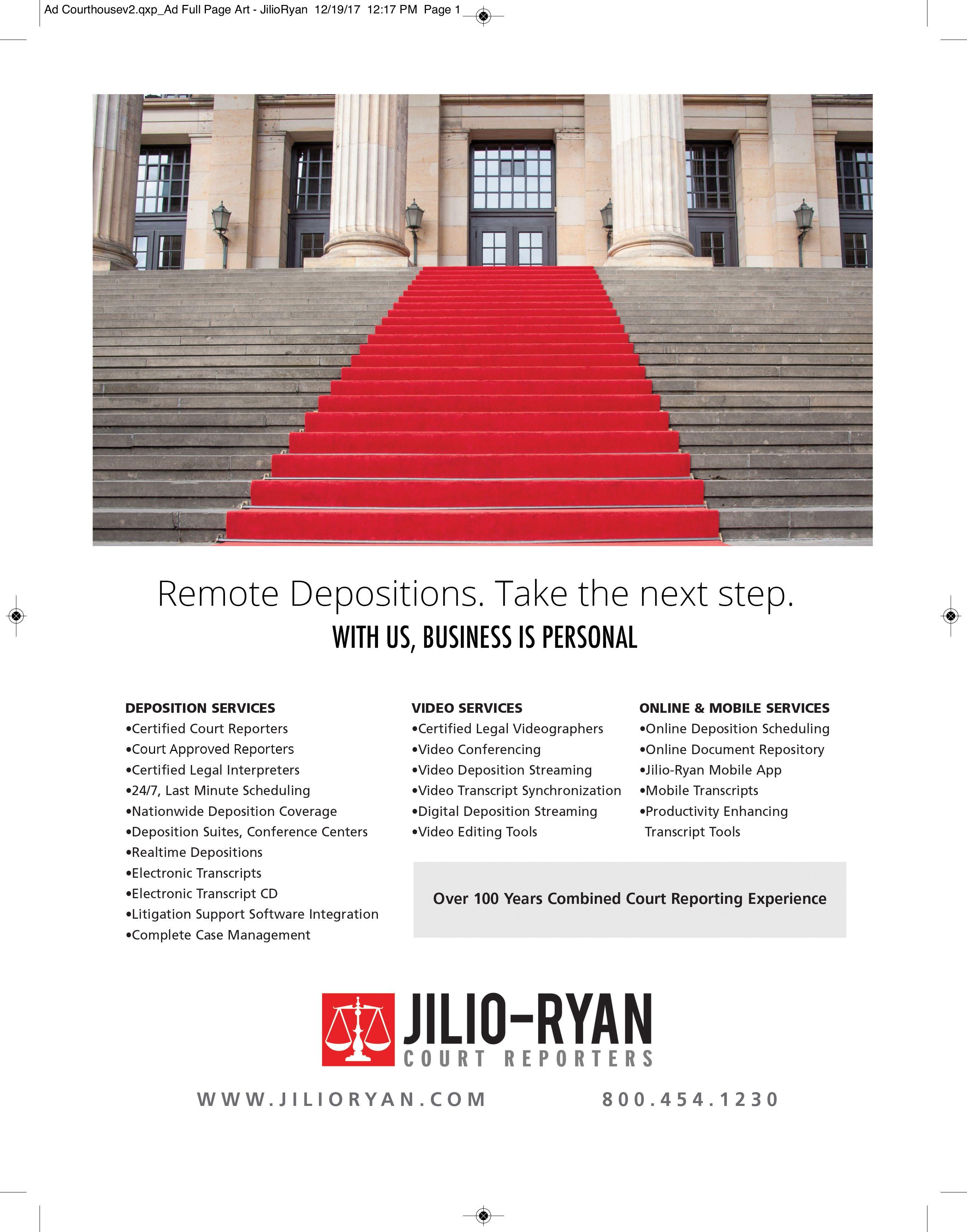




Editorial material appears in Attorney Journals as an informational service for readers. Article contents are the opinions of the authors and not necessarily those of Attorney Journals. Attorney Journals makes every effort to publish credible, responsible advertisements. Inclusion of product advertisements or announcements does not imply endorsement. Attorney Journals is a trademark of Sticky Media. Not affiliated with any other trade publication or association. Copyright 2024 by Sticky Media. All rights reserved. Contents may not be reproduced without written permission from Sticky Media. Printed in the USA EXECUTIVE PUBLISHER Brian Topor EDITOR Wendy Price PUBLICATION DESIGN Penn Creative CIRCULATION Angela Watson PHOTOGRAPHY Chris Griffiths STAFF WRITERS Dan Baldwin Jennifer Hadley CONTRIBUTING EDITORIALISTS Anne M. Bachrach Jeena Cho Frederick J. Esposito, Jr. Robert Lehrer Jeremy Reeves Kimberly Alford Rice Rjon Robins Jeff Wolf ADVERTISING INQUIRIES Info@AttorneyJournals.com SUBMIT AN ARTICLE Editorial@AttorneyJournals.com OFFICE 30213 Avenida De Las Banderas Suite 200 Rancho Santa Margarita, CA 92688 www.AttorneyJournals.com ADDRESS CHANGES Address corrections can be made via email or postal mail. 2024 EDITION—NO.246 TABLE OF CONTENTS 6 Understanding and Working with Anxiety by Jeena Cho 10 Three Marketing Systems Your Business Needs for Maximum Revenue by Jeremy Reeves 12 Five Tips for Making Successful Commitments that Produce Results by Anne M. Bachrach 14 Six Steps for Avoiding HR Headaches and Employment Issues by Robert Lehrer ATTORNEY OF THE MONTH 16 Macyh Nawaey, The Injury Brothers, LLP, San Diego From Family to Firm by Dan Baldwin 22 Don’t Lose Your Shirt When Raising Your Fees by Frederick J. Esposito, Jr . 24 Seven Steps to Improving Nonverbal Communication by Jeff Wolf 26 Six Key Numbers Every Lawyer Should Know About Their Law Firm by Rjon Robins 28 Nurturing Relationships— Building Business by Staying in Touch by Kimberly Alford Rice 26 10 16
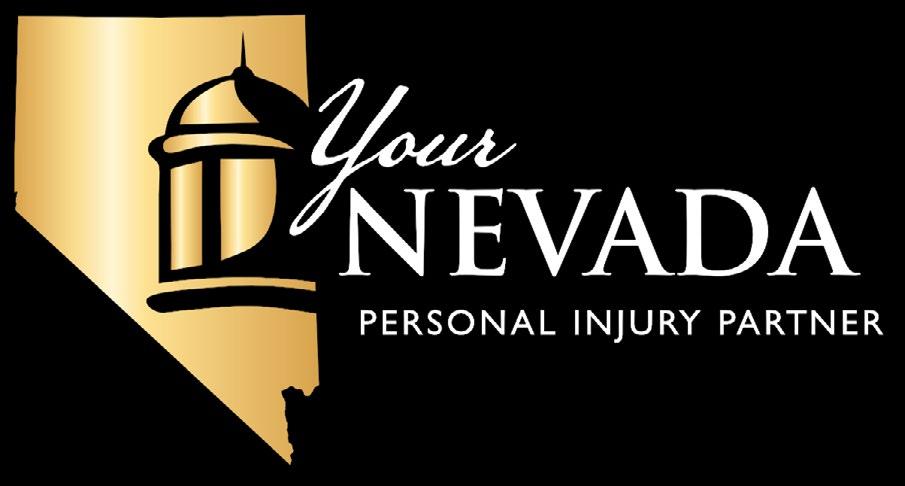







“Rick is one of the best lawyers in the country. I
him every time I have any issue in Nevada and would not hesitate to refer him any type of case of any size.”
~ C. Michael Alder, Esq., Alder Law, Los Angeles, California, CAALA Past President and Former Trial Lawyer of the Year






NEVADA REFERRAL & CO-COUNSEL RELATIONSHIPS NEVADA’S LARGEST & HIGHEST RATED INJURY LAW FIRM 801 SOUTH 4TH STREET | LAS VEGAS, NV 89101 6900 SOUTH MCCARRAN BLVD., #1010 | RENO, NV 89509
call
OVER $1.5 BILLION WON FOR CLIENTS PAST RESULTS DO NOT GUARANTEE FUTURE SUCCESS RichardHarrisLaw.com

Face it: anxiety is a part of your life. As lawyers, we are constantly pressured to deliver results for our boss, opposing counsel, the court, and most importantly, our clients. Regardless of what can be controlled, we are expected to foresee what could go wrong with every correspondence, motion, hearing, email, settlement agreement, and contract. It is no wonder that so many lawyers suffer from anxiety, among other illnesses.
For most lawyers, anxiety is just another facet of life. In our do more culture, this means billing as many 0.1 increments as possible. Often, we do not realize how much stress we are under until we go on vacation—assuming we left our computers and phones behind.
Despite the prevalence of anxiety among lawyers, we rarely discuss healthy ways of managing it. To learn more about anxiety, I reached out to Joe Gilbert, a Licensed Professional Counselor in Raleigh, NC. Gilbert says:
Our brains are hardwired to scan our environment for potential threats. This served a purpose when our cavemen/ cavewomen ancestors faced legitimate threats of starvation, attack by another tribe, or being an appetizer to a large animal. “Fight or flight” was necessary to stay alive.
Thinking about anxiety as an evolutionary response is helpful, as we often try to understand our anxiety from a logical place. According to Gilbert:
Most of us don’t face matters of life or death on a regular basis, [yet our] brain still tries to justify why we are feeling anxious. We may wake up feeling restless, irritable, or worried, and then our brain tells us “there must be a reason for this!” and works hard to find an answer to justify these feelings. In our culture of “knowing,” we believe that if we can find the logical answer, then we’ll feel better. Unfortunately, logic and analytics don’t always apply to human behavior.
Often, stress and anxiety fuels our motivation and drive. As a caffeine fueled insomniac, I was certainly no exception. I would suffer from stomachaches starting on
Understanding and Working with Anxiety
by Jeena Cho
Sunday evening, which mysteriously subsided in time for Friday happy hour. However, I did not see this as a problem, as many lawyers I knew also lived this way. Our anxiety gives us a feeling of purpose and meaning; after all, the work must be important if it is making us miserable.
After nearly a decade of living with persistent anxiety, I finally took action, and found healthier ways of working with anxiety. I started practicing mindfulness and meditation daily, and went through cognitive behavior therapy. What I know now is that debilitating anxiety does not have to be a part of law practice.
Tips for Healthy Ways of Relating to Anxiety
Breathe. Breathe. And Breathe: This is Gilbert’s first piece of advice, and has consistently worked for me. Our breath is a gift that is always under our nose. It is an anchor in stressful situations, and reminds us that we are living beings, not machines that are supposed to run perfectly. Reciting a mantra or prayer can help as well. Two of Gilbert’s favorites are: “This too shall pass” and “Easy does it.”
Smile: Smiling loosens up the facial muscles and helps us relax. Focus on where the tension is in your body. Many of us carry anxiety in our forehead, throat, shoulders, chest, abdomen, and hands. If we can relax those parts of our body, it might help relax our mind as well.
Honesty: One of the most powerful—and paradoxical— tools we have at our disposal is being honest, and naming what we feel. A surefire way to diffuse anxiety is to name it.
Change Your Behavior: Gilbert offers the following mantra to his clients suffering from anxiety, “Move a muscle, change a thought.” If you are having an anxious thought, chances are that further rumination is unnecessary. Go for a walk or a run. Talk to a friend. Pick up a pen and journal. Toughing it out or fighting through anxiety may be a way to avoid the underlying issue. He encourages people to “put down the boxing gloves, and learn to dance with anxiety.”
Attorney Journals San Diego | Volume 246, 2024 6
Write Your Worries: Slow your thoughts down to the speed of writing by journaling (with pen and paper, not on a computer). Ask for help, even though this can be hard. Talk with a trusted friend. Everybody experiences anxiety, even if they have a different word or definition for it.
Good vs. Bad: According to Gilbert, labeling anxiety as bad can actually make it worse.
In the field of mental health, there is a saying that may help explain this: “It’s not important how you feel, but how you feel about the way that you feel.” So when I feel anxious do I add a layer of judgment to this feeling? Am I mad at myself for feeling anxious? Do I believe I shouldn’t feel anxious? Rather than thinking about anxiety in terms of “good vs. bad,” I suggest focusing on healthy or unhealthy ways of relating to our inevitable anxiety.
Back to Basics: It is important to maintain adequate sleep (typically 8 hours a night), exercise regularly, eat healthy foods, drink plenty of water, and cut out vices such as sugar and tobacco. Try meditation, yoga, or another form of mind-body awareness practice.

Knowing When to Get Help
How do you know when it is time to get help for your anxiety?
“If you’ve been using the tools mentioned above for 90 days, and you still feel that anxiety is causing significant problems in your life domains [family, work, social, physical], seek professional help,” says Gilbert.
I was not aware of how anxious I was until I learned to stop living with it. Today, I feel grounded, happier, and at ease. It was not an easy process. Having spent over a decade with anxiety, it was a part of my life and identity. However, the payoff from getting help was immense. I no longer suffer from insomnia, headaches, backaches, or stomachaches. Additionally, I am a better lawyer because I can stay calm and present in difficult situations. Start addressing your own anxiety with these tips from Dr. Gilbert, and seek help if you need to. n

Jeena Cho is a partner at JC Law Group PC, a bankruptcy law firm in San Francisco, CA. In addition to her legal practice, Jeena teaches mindfulness and meditation to lawyers. Her second book, The Anxious Lawyer (ABA) will be released in 2015. You can find her on Twitter @jeena_cho.




Attorney Journals San Diego | Volume 246, 2024 7

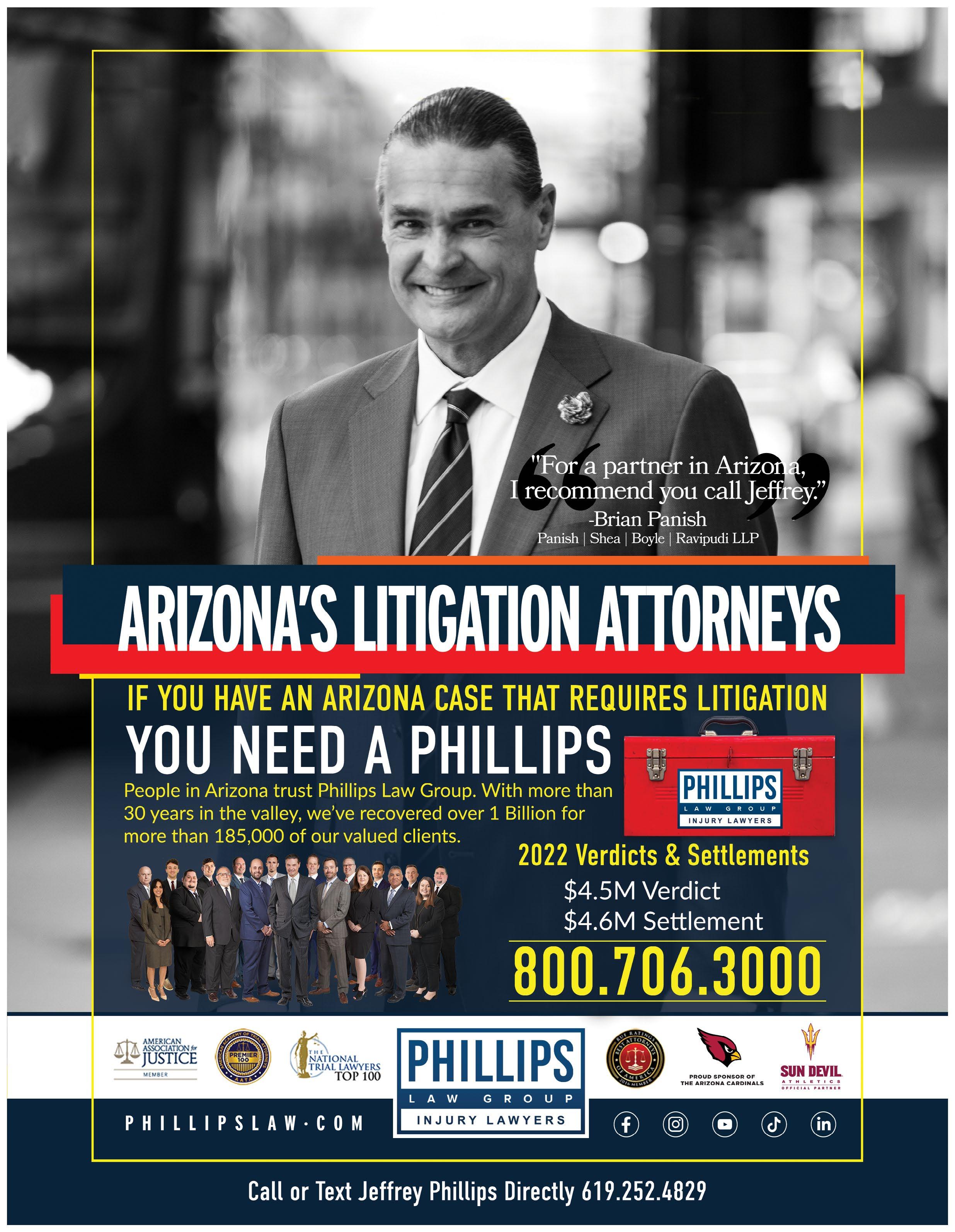

Ever wonder what the difference was between struggling businesses and businesses that seem to dominate everything they do?
I have. It’s something I’ve been studying my entire career while working with businesses everywhere, from startups to those making millions each year.
And from what I’ve discovered ...
• It has nothing to do with the market (there are successful businesses in every market, after all)
• It has nothing to do with price points (there are businesses successful selling $1 widgets, up to million-dollar contracts)
So what is it?
The “Secret” Is Having 3 Unique Systems In Place
1. One for turning prospects into clients.
2. Another for turning new clients into immediately more profitable clients.
3. And a third for turning those clients into repeat, higher value raving fans who spread your message for you.
Let’s start with the first ...
System #1: The Acquisition Path
The acquisition path is the marketing system you put in place to turn prospects into first-time buyers of your service. During this phase, prospects are first learning about you. Out of the three systems, this is the one most people focus on the most (even though it’s the least profitable).
Most people have no follow-up system in place. When potential clients find out about you they either do business with you right then, or they’re lost forever.
That’s a bad position to be in.
To make this process more effective, you’re going to want to use several strategies including:
• Coming up with the perfect value proposition.
• Segmenting your email campaigns so you’re speaking directly to the wants and needs of your prospects.
• Retargeting prospects to “follow” them and present offers that are specific to the reasons they visited your website.
The 3 Marketing Systems Your Business Must Have in Place for Maximum Revenue
by Jeremy Reeves
• Trust-building campaigns to establish trust.
• Authoritative content so they see you as an authority in your marketplace (which also builds trust).
• Long-term nurture campaigns so you’re in frequent communication with them, leading to you being in front of them when they’re finally ready to make a buying decision.
• Low-risk offers to have them make the leap from prospect to clients.
• Surveys to determine exactly who they are, what they’re struggling with and how you can help solve their problems.
• ... and many others!
The purpose of this stage is to take them from the current stage of the buying process they’re in to the moment they realize that you are the ONLY choice as the solution to solve their problem. Your marketing systems need to be set up in a way to make the sale to anybody, whether those persons are nearly ready to buy when they first learn about you or are just starting their research.
System #2: The Profit Generation Path
If you want to grow your business quickly, your main goal should be to acquire the maximum amount of clients upfront and then have back-end profit systems in place to make them more valuable to your business.
Many businesses use something called a “loss leader” model where they acquire a new customer, either at break-even or even a slight loss. This allows you to scale your business because you know your back-end will make those loss leaders more profitable overall.
However, this is mostly used when selling products.
Since you’re a lawyer, that’s not necessary. The reason I bring it up is because it’s a great exercise to think about how you could make that happen—if you have to.
If you can figure that out, it means you’ve come up with a way to dramatically increase your overall lifetime customer value. When you dramatically increase how much an average client is worth to your business, it allows you to spend more, which takes your business to an entirely new level.
One of the ways you can do this is in your profit generation path. The profit generation path is the point in between the prospect and client stage.
It’s the stage where you make an immediate upsell the moment they buy from you.
Attorney Journals San Diego | Volume 246, 2024 10
For example, the second you generate a new client you can offer them additional services which add more value to them. An easy example of this is buying a new car, followed by the salesman asking you if you want one of about a dozen “extras” such as an extended warranty, upgraded tires or seats, or a custom paint job, just to name a few.
The point of this stage is to decrease the amount of time it takes to make that new customer more profitable to your business. Instead of waiting several months to hit your ROI goals, you can do so in a matter of minutes.
And once you’ve done that you can move into the final system...
System #3: The Profit Multiplier Path
Your final stage includes systems you have in place for your customers. Think about what you have in place now. What happens to a customer after they buy from you?
Do you follow up with them ... ask them how the order/ experience went ... make sure they’re getting the most value out of your product/service ... offer them additional products/services that can help them ... or ask for referrals?
If not—you need to.
I’m always stunned by how many businesses make a sale, collect money from those customers who allow their business to be profitable ... and then never get in touch with them again!
Remember Scrooge McDuck’s room full of gold?
It’s like being given access to that room for an entire year, yet you simply walk in, take one handful, walk out and never return again.
Crazy, I know. But that’s exactly what happens in 95% of businesses today.
It’s also why you need to have follow-up systems in place for your
clients. To stay top of mind, offer them additional services they may find valuable, ask for referrals and make sure they never even consider doing business with any of your competitors.
Where Do You Go From Here?
Now that you know what you need to do, the first step is taking a look at what you already have in place and which of these three systems would give you the fastest revenue growth.
For example, if you already have no problem getting new clients but aren’t converting them into repeat buyers, you should start with #2 or #3.
On the other hand, if your clients tend to become raving fans on their own, put your time into getting more clients, at a lower cost, on a more consistent basis.
In other words, your next step is finding the holes you have in your marketing, and fixing them!
I hope this article has helped you and given you a clear path as to what you need to do to increase revenue in your business this year. n

Jeremy Reeves is the CEO & founder of www.GetDreamClients.com. They help coaches, consultants and service professionals get and stay fully booked at all times, increase their fees and enjoy more time freedom through strategic automated marketing. To learn more, including a complimentary training workshop on how to attract and close as many dream clients as you can handle, visit www.GetDreamClients.com. This article is being reprinted with permission from Consultwebs. the premier provider of innovative online legal marketing to ethical U.S. law firms seeking growth and profit. Website: www.consultwebs.com.

Attorney Journals San Diego | Volume 246, 2024 11

The struggle ends up consuming us and we give up trying to change because it’s just too hard. What we thought would be efforts to lead us to a new life, end up being just a temporary change. We’ve tried before and failed again, and the conclusion comes down to a discouraged excuse - I just couldn’t do it, I didn’t have time, or it was too hard.
The truth is making a successful commitment is nothing more than a making a choice to create a desired future outcome. You may say that people who stick to their commitments are an exception, and you are definitely not one of those people. Well, I’m here to tell you that commitments are not personality specific. Each of us has the capability to set successful commitments. So now you’re saying, if that’s the case, why do so many of us fail? Because most people don’t know how to make the decisions that create successful commitment.
1. Commitment Is Nothing More Than Choice
You are choosing your desired future outcome over your current reality. If you really want to lose weight, then you choose to be fit. If you really want to save money for a down payment on a house, then you choose to budget. That’s it - you just made a choice! The chocolate cake and new shoes didn’t even enter your mind because they aren’t what you really want. What you really want is to be fit, or to own your own home. Once you choose your desired future outcome, you remove the struggle that leads to exceptions.
2. Instant Gratification vs. Future Outcome
Do you want your new home or those new shoes? Successful commitment relies on the individual steps between your current reality and your goal. Make every step count, and you will get there faster and easier. Instant gratifications shouldn’t even enter your mind. The only thing you should be focused on is your future outcome, and it should mean more to you than momentary desire for instant gratification. By holding your future clear in your mind, you will make the right decisions to support your goals.
3. Success Relies on 100% Commitment
It’s easy to make excuses and exceptions, but it’s harder to get back on track once you’ve made room for them. Successful goal achievement requires 100% commitment. Not 99%, not even 99.9%. Making exceptions sets you up for failure and makes it harder to stay on track. Decide what you can commit to and stick to it - no excuses, no exceptions. You’ll find that 100% commitment is actually easier
5 Tips for Making Successful Commitments that Produce Results
by Anne M. Bachrach
than 99.9%, because you remove distractions, and the emotion around them. When you can focus solely on your goal, not your distractions, it will be easier to stay on track.
4. Casual Interest or Complete Dedication
You might be interested in the study of law, but are you committed to becoming a lawyer? You might be interested in losing weight, but are you committed to being fit and healthy? You might be interested in saving money for a down payment on a house, but are you committed to a budget? These are all questions to ask when committing to a goal. Your level of desire will determine your results - period. If you only have an interest in something, it will be easier to let it go. However, if you really want something, you will be committed to creating it.
5. Visualize Your Goal
Visualization is powerful and will support your efforts. Spend a few moments every day, in the morning and evening, visualizing your desired outcome. Imagine it as if you were already there. Feel how good you feel, and completely immerse yourself in the smell and sounds of the environment. When you are able to focus on the end result instead of momentary temptation, you will make the right choices that support your desired outcome.
If you’ve tried and failed in past commitments, it doesn’t matter. The past is the past, and you are a different person today. Starting right now, you are now armed with the strength and the tools you need to successfully commit to creating your desired future outcome.
“There is a difference between interest and commitment. When you’re interested in doing something, you do it only when it’s convenient. When you’re committed to something, you accept no excuses, only results.”—Ken Blanchard, Author of over 30 books, including the best-seller, The One Minute Manager. n

Anne M. Bachrach is known as The Accountability Coach. She has 23 years of experience training and coaching. The objective is to do more business in less time through maximizing people’s true potential, and ultimately leading them to an even better quality of life. Anne is the author of the book, Excuses Don’t Count; Results Rule! and Live Life with No Regrets; How the Choices We Make Impact Our Lives. Go to www.accountabilitycoach.com for information about Anne M. Bachrach, Copyright© 2008, Anne M. Bachrach All right reserved. For information contact FrogPond at email susie@FrogPond.com.
Attorney Journals San Diego | Volume 246, 2024 12

In a world full of mergers and monopolies, count on us to keep it real. When it comes to court reporting, video and litigation services, Peterson delivers real reporters, real experience, and real service. Day by day, year by year, case by case, we’ve been setting the high bar for integrity, technology and reach for over 35 years. Independently owned and operated 100% Woman-owned Business WBE Certified Serving CA and the US since 1986 Nationwide Reporting | petersonreporting.com | 800-649-6353 Peterson Reporting 2023 Atty Journal HPH.indd 1 4/25/23 4:45 PM Are You a Business Owner OR Attorney With a Client Who is Dealing With an ADA Violations Lawsuit? Don’t Panic! (ACT) Now! NATIONWIDE ADA COMPLIANCE SOLUTIONS We have the answers and solutions to all of your ADA compliance issues for your business and/or client. 2041 Riviera Drive Vista, CA 92084 (760) 940-6106 adacomplianceteam.com ADA Compliance Team, Inc. (ACT) COMPLIANCE SURVEYS / ACCESSIBILITY SOLUTIONS / TRANSITION PLANS 13 Attorney Journals San Diego | Volume 246, 2024
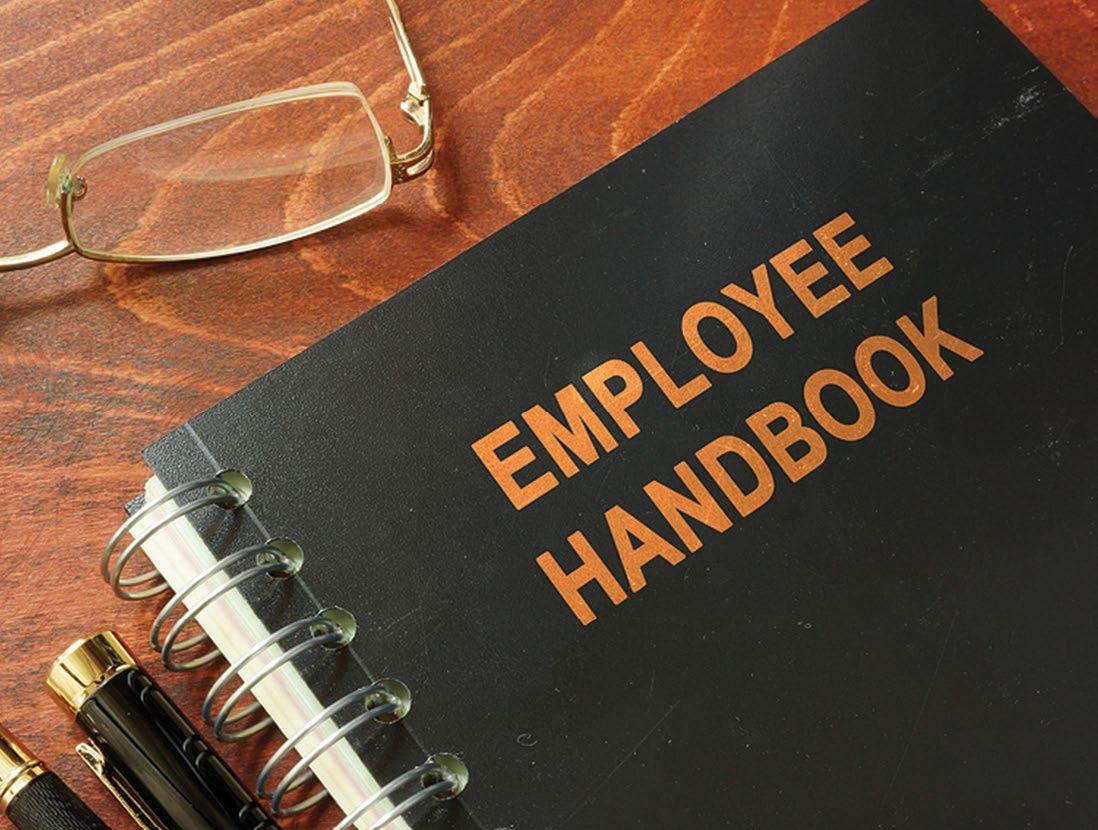
Regardless of whether you’re the managing partner of a firm with dozens of attorneys and support staff, or you’re a solo practitioner, relying on the assistance of a skilled paralegal, a legal secretary, and other assistants, there’s no getting around the fact that your firm needs to be prepared to handle employment issues. Fortunately, if you follow these six suggested tips for minimizing employee problems in your law practice, you can likely save yourself a great deal of time and frustration if and when an employment problem arises.
Update Your Employee Handbook At Least Once Every Two Years
Law firms of all sizes would be wise to make sure that their employee handbook is updated at a minimum of once every two years. This will reduce liability by clearly outlining the firm’s vacation payout policy, the employee complaint process, disaster recovery plans and policies on how workplace violence and/or harassment will be handled.
In addition, your firm’s employee handbook must include code of conduct requirements, which should cover topics including dress code, code of ethics, safety, and attendance policies. In addition, your firm’s communications policy needs to address the proper usage and storage of mail/emails, text messages, and address any social media related restrictions. And of course, law firms of any size must address nondiscrimination policies, employment and termination policies, and include an acknowledgment letter.
It’s important to provide all employees with a copy of any revisions to the employee handbook as they are implemented. Likewise, a new letter of acknowledgment of receipt of revisions to the handbook should be distributed and signed by all employees.
6 Steps for Avoiding HR Headaches and Employment Issues in Your Practice
by Robert Lehrer
Maintain Proper Documents
When you find yourself in the undesirable position of having to terminate an employee, you’ll find that the process is far less anxiety inducing if you’ve kept proper documentation of their performance. All violations of the firm’s code of conduct or other policies must be addressed and documented, so as to protect your firm from a lawsuit later on.
For example, when evaluating performance or taking disciplinary action, make sure that the meeting is documented with the dates and times of the incidents. Suggestions for improvements to be made in the future should also be provided for the employee facing disciplinary action. In addition, be sure to record the names, dates, and times of all who are in attendance when addressing the violation(s) with an employee.
At the conclusion of any meeting regarding firm policy violations, be sure to have the employee sign an acknowledgment that they have received warning of the violation, understand the future disciplinary actions that may be taken if the problem is not corrected, and understand how to not make the same mistake again.
Safely Store All Employee Records
An I-9 is the absolute bare minimum of what needs to be safely stored for each firm employee. Savvy firms will also retain a copy of the employee’s resume, any background check results, any confidentiality agreements, and a copy of the acknowledgment of receipt of the firm handbook, along with items such as the offer letter presented, and the W-4.
A second file for each employee ought to be created and maintained, which will include all health and welfarerelated benefits information which may be protected
Attorney Journals San Diego | Volume 246, 2024 14
under HIPAA privacy laws. This safely stored file ought to include items such as insurance benefit forms, drug screening consent forms and results, physician’s notes, and/ or any personal or family leave information.
In addition to keeping all personal information safe and secure, it’s smart to schedule an annual audit of your own files to ensure that all pertinent information is where it ought to be, and that it is safely and privately protected.
Spend More Time Screening Employees
An ounce of prevention is definitely worth a pound of cure when it comes to hiring new receptionists, legal secretaries, office managers, paralegals, law clerks and of course, attorneys. Discrepancies often exist between what potential employees report on resumes and cover letters, and what can be verified by their previous employers. In addition to a job history verification, you’re going to want to conduct an education verification, criminal background check, fraud detection, and a National Sex Offender Registry check.
Because of the time commitment required to thoroughly pre-screen employees, it’s not surprising that many firms opt to outsource this process, including drug screening, background checks and more to companies who provide this service. If you choose to pre-screen employees on your own, be prepared for it to take time, but it’s worth every minute you spend upfront, to avoid the time and expense of terminating, and having to start the process over again with a new candidate.
Focus on Onboarding Training
Studies have shown that employee turnover costs employers much more than an employee’s annual salary. The time spent training only to have an employee leave, followed by finding another candidate is incredibly costly in terms of time and money. Onboarding training aims to reduce turnover.
In its simplest form, onboarding refers to the process of acclimating and welcoming new members to your firm, by providing them with resources, tools, and the knowledge they need to be successful and productive members of your firm. In order to create a firm culture that matches with your vision, it’s smart to formalize an onboarding training program, so that new employees understand overall goals and vision for the firm.
Be Careful with Classification of Employees
Any slip-up with the classification of employees can wind up costing your firm a lot of money. You need to familiarize yourself with the differences between a nonexempt employee, an overtime exempt employee, and any independent contractors, including contract attorneys. The Fair Labor and Standards Act (FLSA) governs classification issues, while the United States Department of Labor Wage and Hour Division provides guidance on the FLSA. Visit www.dol.gov for more information.
If being responsible for hiring, training, and classifying employees all seems like way more work than you signed up for when launching your firm, rest assured you’re not alone. As the head of a firm of any size, you’ll ultimately be responsible for the success and safety of your practice. But that doesn’t mean that you have to personally address all of the HR and employment issues facing your firm on your own.
It is a misconception that Professional Employer Organizations (also called PEOs) are only available to large firms. On the contrary, firms ranging in size from 5-150 employees are actually perfect candidates for engaging the services of a PEO, because the firm will receive the “big firm benefit packages” which help to recruit and retain top talent. They also reduce many of the employer liabilities that your firm may currently have. Indeed, by offloading these responsibilities to companies who handle employment matters and HR issues each and every day, you can focus on what you do best—passionately advocating on behalf of your clients, so that your firm can continue to flourish. n

Robert Lehrer is a Business Performance Advisor with Insperity, which provides an array of human resources and business performance solutions including administrative relief, better benefits, reduced liabilities and systematic ways to improve productivity. Additional company offerings include Human Capital Management, Payroll Services, Time and Attendance, Performance Management, Organizational Planning, Recruiting Services, Employment Screening, Financial Services, Expense Management, Retirement Services and Insurance Services. Contact Robert at Robert.Lehrer@Insperity.com, or via phone at 818-546-3112.
Attorney Journals San Diego | Volume 246, 2024 15
From Family to Firm
A Journey of Purpose and Impact
by Dan Baldwin
When asked about the most significant difference between the “then and now” since his last Attorney Journals interview, Macyh Nawaey without hesitation states the birth of his two children—a boy two years old and a girl of two months. These events have not only made him a better person, but also a better professional.
“When I held my son for the first time, I realized this was my purpose in life and that care for someone else transfers directly to my work as a personal injury attorney. The moment was very transitional and it impacted my career as well, because I started to understand more about my clients who have children, who have family, or have those who need their ongoing care and support,” he says.
Dramatic transitions are nothing new for this family. He and his brother, Elias, immigrated to the United States from Afghanistan following the invasion by the Soviet Army and the replacement of a democracy by a communist regime. Fully embracing the freedom and free enterprise system here, Nawaey founded The Injury Brothers, LLP immediately upon graduating law school. He was soon joined by his brother, who is now a Partner Attorney in the firm.
Nawaey says that the new additions to his family have heightened his firm’s commitment to helping other families who are often experiencing the worst moments in their lives.
“Regardless of the harm done to a client, we can do a great job and provide a great service on the legal side of the case. At least a family won’t have to worry about how they are going to make their rent. Or how they are going to pay their car note. Or how they can feed their kids and still cover their other bills. I always think of my own family when I meet our clients. We always ask ourselves how can we go above and beyond and work so hard on the case and do our very best,” he says.

Elias Nawaey says word of mouth is their strongest marketing tool. The attorneys take pride in spending as much time as necessary with each client. They not only talk, but they listen. They explain the often-complex case they’re involved in. “I won’t let 24 hours go by before they hear back from me. Whenever possible and practical, I’ll call or text them right away. If I’m in a meeting or a court hearing, I’ll let them know I’ll be calling back at a specific time, perhaps immediately after the meeting, but certainly within 24 hours. We believe it is essential for our clients to get responses right away. And I think so much of that drive here is because we’re dealing with a serious issue for the client, perhaps the most serious issue they will ever face. One of our most important jobs is to reduce the anxiety and stress levels of our clients.”
Clients agree with that assessment.
“TIB is amazing. My husband and I clicked with them automatically. They answered every call, every text, always kept us updated. They genuinely care about their clients. I’ve even referred a friend to them and she called me to thank me! Hopefully, nothing happens in the future, but if so, they will definitely be hearing from me again. Thank you for everything.” —Elizabeth A.
Creative Solutions to Basic Problems
The Injury Brothers focus on personal injury, workers compensation, wrongful death, car accidents and related issues. Those intensely personal issues for their clients require more than knowledge of the law. They require commitment and, often, innovative thinking.
16 Attorney Journals San Diego | Volume 246, 2024


© Bauman Photographers ATTORNEY OF THE MONTH 2024 JOURNALS Co-founders/Partners: Macyh Nawaey and Elias Nawaey
The firm has been highly successful in open-policy cases— bad faith cases in which the insurance company denies coverage to their own insured. Home fire cases are frequent examples, tragic incidents in which people have been impacted, or hurt in a way or have lost a significant amount of assets. The insurance company refuses to cover the loss because of some (they claim) exclusion or exception noted in the policy. The situation is most often devastating for the individual homeowner and his family. “Those are the cases where we will then represent the insured and sue their own insurance company, if we believe there’s enough evidence to prove that the insurance company should have covered that loss. The insurance company may have forgotten about the rights and the health and well-being of their insured or client, but we haven’t,” Macyh Nawaey says.
The firm recently helped a client through an “open policy” case involving a young college couple injured in an auto accident, a head-on collision. Each was seriously injured, but liability was disputed by the other driver’s insurance company. The firm found a nearby business video that showed the other driver was clearly at fault. After liability was put to rest, the insurance began claiming that the couple was not “all that” injured. The brothers say this response is a typical insurance company tactic they frequently encounter. They filed a lawsuit immediately after their demand expired. During litigation, the case settled for more than three times the policy limits of the at-fault driver’s insurance, with the insurance company paying the entire settlement.
Elias Nawaey says, “There is a lot that goes into these cases, strategy, and experience/knowhow of opening policies. But time and time again, we have done so successfully. Insurance companies have teams of lawyers, so victims of accidents deserve the same and need the same quality of representation to fight for them. That’s where we come in.”
The firm has recently engaged in a number of hybrid cases, meaning someone at work is injured by a third party. For example, a worker or employee who suffers an injury due to a third party’s fault. The worker can be involved in a motor vehicle accident while driving for a company, for example. Normally, the injured party would be covered by workers compensation insurance, but the injured person would also have an opportunity to also go after that third party (through his attorney or law firm) who caused the injury, collect from them, and still have their client covered by workers compensation.
Elias Nawaey says, “We’re able to optimize our client’s position. That helps us stand out because many firms in San Diego County often send such cases to third-party attorneys. We do both in house. So that helps us get justice for our clients swiftly and efficiently.”
The firm’s track record is significant. For example, three recent cases resulted in millions of dollars in compensation when the insurance policy limit was only in the tens of thousands of dollars.
Making an Impact
“Being a new parent has had a genuine ‘then and now’ effect on our firm in that we’re more than ever focused on more impactful cases. We’re taking on cases that are more lifechanging for our clients.” Macyh Nawaey cites, for example, a case in which an injured woman is told “no” from a number of firms. The woman, a single mother, loses her car, which means she loses her means of going to work and earning a living. That, in addition to the pain and injury she suffers. “When someone like that calls, we respond and we respond quickly. I was able to get that client’s vehicle replaced and get her paid for her injuries. It still was my favorite case of the year because I’m helping someone whose car to her means so much more than just a vehicle. It’s her only mode of transportation and how she takes her children to school. I think becoming a parent makes me even more proud of those cases.”
The word impact doesn’t necessarily refer to the size of the settlement, he says. A woman who has an MRI indicating a serious whiplash that will require months to heal is not a lifeor-death case, but it is nonetheless a significant matter to the injured person and her family. “That’s the kind of case I love to handle. I’m reminded of the story about someone helping another person by giving them five dollars when they only have six dollars in hand. That’s more impactful than a millionaire handing over a twenty-dollar bill. I’ve literally seen cases where dollar for dollar it was the smallest case for us that month or that year. But the person literally teared up and gave me a hug picking up their settlement check. We all have a limited time on Earth. Helping others, when it is all said and done, is the most important thing we can do.”
Many injury cases are mostly black and white in terms of liability or who caused the accident or injury. The challenge is getting the best results for the clients, while fighting insurance companies and their defense tactics. “We care about these cases. And I see this as my craft. I see this as what I’m spending time away from my children, away from my family doing. And these families who’ve been so seriously impacted calling on me to help them. I feel honored, in the sense that they would choose me and ask me to help them. So, anything other than a stellar job would keep me up at night. That’s the kind of personality I have. I make sure there’s not a single stone unturned for our clients,” Macyh Nawaey says.
Taking Care of Family at Home and Work
“Being family orientated, we make sure our firm reflects that essential element in our culture and environment to all our clients. Family is the building block of a successful culture, so we also want everyone to put family first. Additionally, we want to encourage a giving atmosphere. Giving to the needy is
18 Attorney Journals San Diego | Volume 246, 2024

 © Bauman Photographers
The Nawaey Family
© Bauman Photographers
The Nawaey Family
something that is very near to both my brother and me. Each time we win a big case, we make sure to give some of that back by charities and nonprofits,” Elias Nawaey says. His brother adds, “Giving back has just become a big part of the way we do business. When we look at cases and we go, ‘Hey, you know, what if we hit the numbers that we want on these cases, we should really take a certain amount of each and give back.’ And we do.”
The firm and its team members are big proponents of giving back to their profession and the community at large. They have donated tens of thousands of dollars to numerous charities and non-profit organizations in 2023 alone—most having to do with helping the homeless and feeding the hungry.
Macyh Nawaey says that being a parent has significantly enhanced those decisions. By his estimate, that increase approaches an 80 percent increase over an already significant effort. “The worst thing I can think of is a child being hungry and a parent who isn’t in a position to do anything about it because of an injury or an accident.”
One of the firm’s most ambitious efforts this year is in arranging through an international charity, Zakat Foundation, for the sinking of a water well in Africa, a place where water is limited and, in some cases, undrinkable or even dangerous to health. Many people walk miles every day just to obtain drinking water for their family. Elias Nawaey says, “Once the water well is built, they will affix a plaque dedicated to the people who funded the project. We placed it under our children’s names.”
Contributing to better the lives of others is an extension of the brothers’ and their firm’s commitment to serving a purpose with passion. Macyh Nawaey says, “I don’t see it as an ‘option’ so much but rather a duty, for us to all help give to those in need. We are blessed to be doing this. We’ve worked hard enough and we’ve been lucky enough to be in a position to help others through our donations, volunteer work and through our legal abilities. It’s really an honor to be in such a position. One thing you can say about The Injury Brothers comparing then to now is that we’re even more passionate about building our business—and building it the right way.” n
Contact
The Injury Brothers, LLP
11440 West Bernardo Court, Suite 300 San Diego, CA 92127 (858) 800-4000
www.theinjurybrothers.com

» EDUCATION
• Thomas Jefferson School of Law, Juris Doctor – 2014
• University of California - San Diego, BA – Bachelor of Arts – 2011
»
HONORS AND AWARDS
• Super Lawyer, Super Lawyers – 2021
• Rising Star, Super Lawyers – 2020
• Rising Star, California Super Lawyers – 2019
• Clients’ Choice Award, Litigation – AVVO – 2016
»
ASSOCIATIONS AND MEMBERSHIPS
• North County Bar Association, 2016 - Present
• Consumer Attorneys of San Diego, 2016 - Present
• San Diego County Bar Association, 2015 - Present
• American Bar Association, 2015 - Present
• State Bar of California, 2015 - Present
• San Diego North County Bar Association, 2015 - Present
• United States District Court for the Southern District of California, 2015 - Present
• Los Angeles County Bar Association, 2015 - Present
• Young Lawyers Club, 2015 - Present
• Thomas Jefferson School of Law Alumni Association, 2015 - Present
EXPERIENCE
20 Attorney Journals San Diego | Volume 246, 2024
© Bauman Photographers

• Websites • Presentations • Social Media • Email Marketing Writing, graphic design and marketing strategy for … • Branding • Press Releases • Print & Digital Ads • Business Cards • Newsletters • Blog Posts • Marketing Campaigns • Brochures, Flyers & More We’ll Help Your Firm Get Noticed! Women-Owned Business • 215-550-1435 • penn-creative.com

As part of your law firm’s strategy, you want (ideally) to align your pricing methods, metrics and communications with your clients’ value proposition. That, of course, is easier said than done. Most firms struggle to achieve the delicate balance between the rates they need to charge and the rates clients are willing to pay. And all firms face the same fear: What if you miscalculate and lose your best clients?
Still, there comes a time when you have to increase your rates to stay profitable.
How to Raise Fees without Losing Clients
So, how do you implement a rate increase without driving away the client? It comes down to communication, metrics, timing and value. Here are some thoughts on how to go about it.
1. Get over the fear factor. Don’t let fear keep you from raising rates! Chances are, if you are making excuses to avoid a rate hike, those excuses are a cover for speculations based on fear.
2. Communicate the “whys.” When your firm has specific reasons for raising rates, tell your clients. Perhaps you froze rates during the recession out of consideration for your clients’ financial situations, or to keep their business. Maybe you wrote off a considerable amount of time each month resulting in even lower effective rates. No matter how big or small, letting clients know about these financial courtesies builds goodwill—and it can be a great client development tool.
3. Understand the metrics. Before deciding to increase your rates, know your firm’s economics. Do you know where your break even point is, profit-wise? How much it costs to produce a billable hour, or a brief? Or your costs by timekeeper? Understanding the economics makes it much easier to determine the increase. Keep in mind that smaller increases—3 to 5 percent per year— are generally better, and are met with less resistance when they are implemented consistently (i.e., the same time
Don’t Lose Your Shirt When Raising Your Fees
by Frederick J. Esposito, Jr.
each year). When setting rates, it’s not just about what the firm “needs” to charge to break even, but also about what the firm “wants” to generate in fees. Review your costs, calculate your break even point, and determine a suitable rate. You might also consider the 80/20 scenario: Identify the 20 percent of your clients who generate the least profit and either raise their rates or terminate them. If this sounds harsh, keep in mind that you are in business to generate profit—you cannot afford to carry unprofitable clients just because you like them.
4. Timing is everything—no surprises! The worst thing you can do is fail to tell clients about your rate increase, instead letting them find out when they open their next invoice. Let your clients know in writing that you are increasing rates and provide sufficient notice, perhaps 60 days. Also, as a best practice, make sure your engagement letters include language indicating the firm will, upon notice, adjust rates periodically. This should alleviate some pushback. Some clients will resist and attempt to negotiate the proposed rate increases. That opens the door for discussions about the actual value of legal services provided ... and brings us to No. 5.
5. Talk about the value being delivered. Will you lose some clients who aren’t willing to pay a higher rate? Maybe. But if you do, your firm needs to ask an important question: Why doesn’t the client perceive the full value of the services provided? Get past the fear factor and help clients understand the value your firm delivers. At every chance, seize the opportunity to educate them! n

Frederick J. Esposito, Jr. is Executive Director of Rivkin Radler. He has more than 20 years of law and accounting firm experience. He writes and speaks extensively on legal management topics, including billing, collections, financial and profitability models, risk management, human resource development, project management and alternative fee arrangements. Follow him @lawmgtguru.
Attorney Journals San Diego | Volume 246, 2024 22



PRACTICE AREAS Personal Injury Rideshare Sexual Assaults Motorcycle Accidents Dog Bites Car Accidents Slip and Falls Truck Accidents Drunk Driving Accidents Rideshare Accidents Bicycle Accidents Wrongful Deaths 5 STAR REVIEWS: REAL PEOPLE. REAL INJURIES. REAL MONEY. • We Offer FREE CONSULTATIONS • Available 24/7 • Rated 5-Stars Across the Board • Voted Best in Orange County • Millions Recovered for Our Clients • 98% Success Rate • Client Focused, Results Driven • You Have Injuries, We Have Answers WHO HURT YOU? $1.5M AUTOMOBILE $3.25M PERSONAL INJURY $1M TRIP & FALL $925K EMPLOYMENT LAW $865K TRUCKING $600K MOTORCYCLE $550K AUTOMOBILE $475K DOG BITE SANTA ANA 2090 N Tustin Ave, Suite 250 Santa Ana, CA 92705 RIVERSIDE 4193 Flat Rock Rd, Suite 200 Riverside, CA 92505 WEST HOLLYWOOD 925 N La Brea Ave, Suite 521 West Hollywood, CA 90038 BAKERSFIELD 2601 Oswell St, Suite 206 Bakersfield, CA 93306 LAS VEGAS 3651 S Lindell Rd, Suite D169 Las Vegas, NV 89103 REFERRAL FEES PAID RAZAVI LAW GROUP • (949) 500-1926 • ali@razavilawgroup.com • razavilawgroup.com AWARD-WINNING ACCIDENT ATTORNEYS

Businesspeople learn early in their careers the importance of a firm handshake and making eye contact when meeting other businesspeople for the first time. Both the handshake and eye contact are examples of how nonverbal communication contributes to first impressions.
Murray Johannsen, in an article titled “Nonverbal Communication,” appearing in Legacee online, describes the subtlety of handshakes: “The example from the American culture is the amount of pressure one exerts on the other person’s hand during a handshake. One puts a certain amount of pressure into the handshake, and it should be neither too much nor too little. Another aspect of this is, when grasping another’s hand, the web of your hand intersects the web of their hand.”
If a handshake can communicate so much, that’s indicative of the need to pay attention to all areas of nonverbal communication. The question then becomes: How do you improve your nonverbal communication skills as you listen to and speak with others?
Step 1: Watch Yourself ... and Others.
When communicating, focus on the use of your body. The goal is to increase the expressive nature of your body, when appropriate, without being overdramatic. Be aware that gestures are often more useful with groups, such as in meetings and presentations. If a person’s words fail to match his or her nonverbal cues, it’s best to trust the nonverbal messages. Listen with your eyes. In most cases, the nonverbal message is more accurate.
Step 2: Maintain Eye Contact.
Eye contact is crucial when speaking with anyone, particularly coworkers, superiors, or direct reports. It promotes trust and understanding. Try to increase eye contact when speaking with others, and see if they’re making and maintaining eye contact with you. If someone avoids eye contact, you’ll
7 Steps to Improving Nonverbal Communication
by Jeff Wolf
likely sense the person’s discomfort or dishonesty. You can ease another’s discomfort by asking questions that enhance communication.
Step 3: Work on Your Posture.
Your mother emphasized the need to stand up straight and avoid slouching in your chair. As it turns out, Mom was giving you your first lesson in nonverbal communication. Posture is a nonverbal indicator of confidence level. A gesture conveys a message by using one part of the body, whereas a postural shift involves the movement of the body as a whole. A closed posture (folded arms and crossed legs) indicates a closed personality and a lack of confidence. Open posture (arms spread in a relaxed manner) is a much more confident pose. Posture should also be in sync with conversations so you avoid sending mixed messages. When you’re sitting behind your desk or at a meeting table, sit up straight. Don’t slump; it conveys disinterest and inattention. Leaning back, or rocking back and forth in your chair, tells others you’re bored. In contrast, leaning forward in your chair when listening to someone speak demonstrates active interest in both the person and conversation.
Step 4: Straighten Your Desk.
A sloppy desk or office sends the message that you’re disorganized and careless. Messy desks may be a symptom of a larger problem such as inefficiency, which stems from an inability to find files or other important papers. Disorganization creates stress and limits productivity. Instead of creating vertical piles on your desk, rely on to-do files that can be stored inside a drawer.
Step 5: Read Your Audience.
If you’re making a presentation, be aware of your audience’s nonverbal communication. As your presentation progresses,
Attorney Journals San Diego | Volume 246, 2024 24
watch for signs of slouching, yawning, or dozing off; this means you’ve lost their attention. If, on the other hand, the group is energized and interested, participants’ body language may convey that they want you to ask for their thoughts and input. Learning to read a group’s mood enhances your abilities as both a speaker and manager.
Step 6: Listen to Your Voice.
Paralanguage, or paralinguistics, involves the various fluctuations in one’s voice, such as tone, pitch, rhythm, inflection, and volume. These cues can have a powerful effect on communication. A loud or very forceful tone, for example, may convey a stronger and more serious message, as compared to softer tones. Sarcasm can also cause problems in the workplace. A manager’s sarcastic tone creates stress because his tone (joking) is meant to contradict his words (hurtful or biting).
Step 7: Question Yourself.
Throughout the day, monitor your progress. Ask yourself the following questions about your performance: How
was I perceived at the meeting? Could I have done something differently? Were people really interested and paying attention to what I was saying? Did I listen well to others? As you answer these questions, your selfawareness will increase.
None of these six steps can be taken for granted. True, some people are more aware of slight distinctions of nonverbal communications than others, but everybody can learn to use the six steps and thereby make dramatic improvements in their ability to communicate effectively with others. n

Jeff Wolf is the author of Seven Disciplines of a Leader and founder and president of Wolf Management Consultants, LLC, a premier global consulting firm that specializes in helping people, teams and organizations achieve maximum effectiveness. A dynamic speaker and highly requested executive coach, he was named one of the country’s top 100 thought leaders by the prestigious Leadership Excellence Magazine. For more insights from Jeff Wolf, check out his book, Seven Disciplines of a Leader.

To schedule, contact Haward Cho: (213) 683-1600 and (619) 233-1323 or haward@adrservices.com

Short summaries (one-paragraph), organized by legal topic, of every new published CA civil case, helping CA attorneys save time, win more, and make more money. Monthly, quarterly, annual, and annual practice area publications are available. Subscribe at www.cacasesummaries.com
Monty A. McIntyre, Esq. Mediator, Arbitrator & Referee ADR Services, Inc.
Attorney Journals San Diego | Volume 246, 2024 25

The last few days I’ve been harping a bit on the importance of “knowing your numbers.”
Yesterday, I said that the “Key” numbers for the owner of a solo or small law firm to be on top of are as follows:
1. Budget
2. Budget Variance Report
3. Cash Flow Projection (6 weeks rolling)
4. Aged A/R by Account
5. WIP
6. Cash Position (Operating & Trust)
In response, a few lawyers asked me to explain why Balance Sheet is not on my “short list.”
A couple more thought their YTD revenues should make my top six list. They all made very nice arguments that I’m not going to distract you with here.
Instead, here’s the explanation to each of these questions, so you don’t let yourself get distracted…
Balance Sheet: Financial accountants love balance sheets. So do book keepers. Management CFO’s aren’t nearly as impressed with the balance sheet, however. There are two principal reasons for this big difference in who cares more about what.
First, the balance sheet for solo & small law firms is mostly fictitious. In other words, the assets don’t really matter. Assets don’t pay bills. Cash flow does. Assets don’t hire staff or fund marketing campaigns. Cash flow does.
Balance sheets, which are driven by the estimated value of assets against the estimated total of liabilities, tell you how much “equity” you have in your law firm. So what? Who cares?
Would you rather own a law firm with one million dollars of “equity” and flat, anemic or even negative cash flow; or a law firm with half as much equity but twice as much positive cash flow?
THAT is why Management CFO’s of law firms don’t worry too much about balance sheets.
Because cash flow (which is driven by the 6 key numbers) is what really makes a difference in how you manage a small law firm.
YTD Revenues: Year-to-date revenues are nice to know about. This number helps put everything into perspective. It’s a
The 6 Key Numbers Every Lawyer Should Know About Their Law Firm
by Rjon Robins
great way to pat yourself on your back and congratulate yourself for a job well done. I look at my YTD revenue every month and every year I look forward to “Breaking The 7 Barrier” earlier and earlier in the year.
But YTD revenues don’t drive forward-looking decisions.
YTD revenues are like looking in your rear-view mirror or at a line on your GPS screen that tells you where you have been.
YTD numbers are good for nostalgia and filing your tax returns. But they don’t drive ongoing, forward-looking management, marketing, sales, staffing or any other of the critical decisions that management of the law firm must make on an ongoing basis to ensure profitability and a balanced lifestyle.
If this is all news to you, don’t worry.
You’re not alone. None of this is anything they teach any of us in law school.
If you “know” this stuff but you’re not making monthly management decisions based on what your six key numbers are telling you, then I absolutely promise you that you are NOT coming close to having the most profitable, predictable and/or the most professionally-satisfying law firm that you COULD be enjoying.
There is a reason why the MOST successful law firms in the country have a CFO on their team too.
You can be your own CFO. It just might be a thousand times harder for you to be your own CFO than to get some outside help. And way more expensive for you to try and be your own CFO too. But not as expensive as NO-ONE being the CFO of your business. That’s REALLY expensive! n

Rjon Robins founded How To MANAGE a Small Law Firm.com which has since grown to be one of the leading solo and small law firm management advisory services, dedicated exclusively to the unique needs of the owner of a solo or small law firm. Today How To MANAGE A Small Law Firm boasts coast-to-coast membership with ambitious and entrepreneurial lawyers hailing from all practice areas and walks of life. RJon graduated from The American University in Washington, DC and received his Juris Doctorate from Nova Southeastern University, in Ft Lauderdale, Florida in 1996. RJon is licensed to practice in both state and Federal court in the State of Florida.
Attorney Journals San Diego | Volume 246, 2024 26
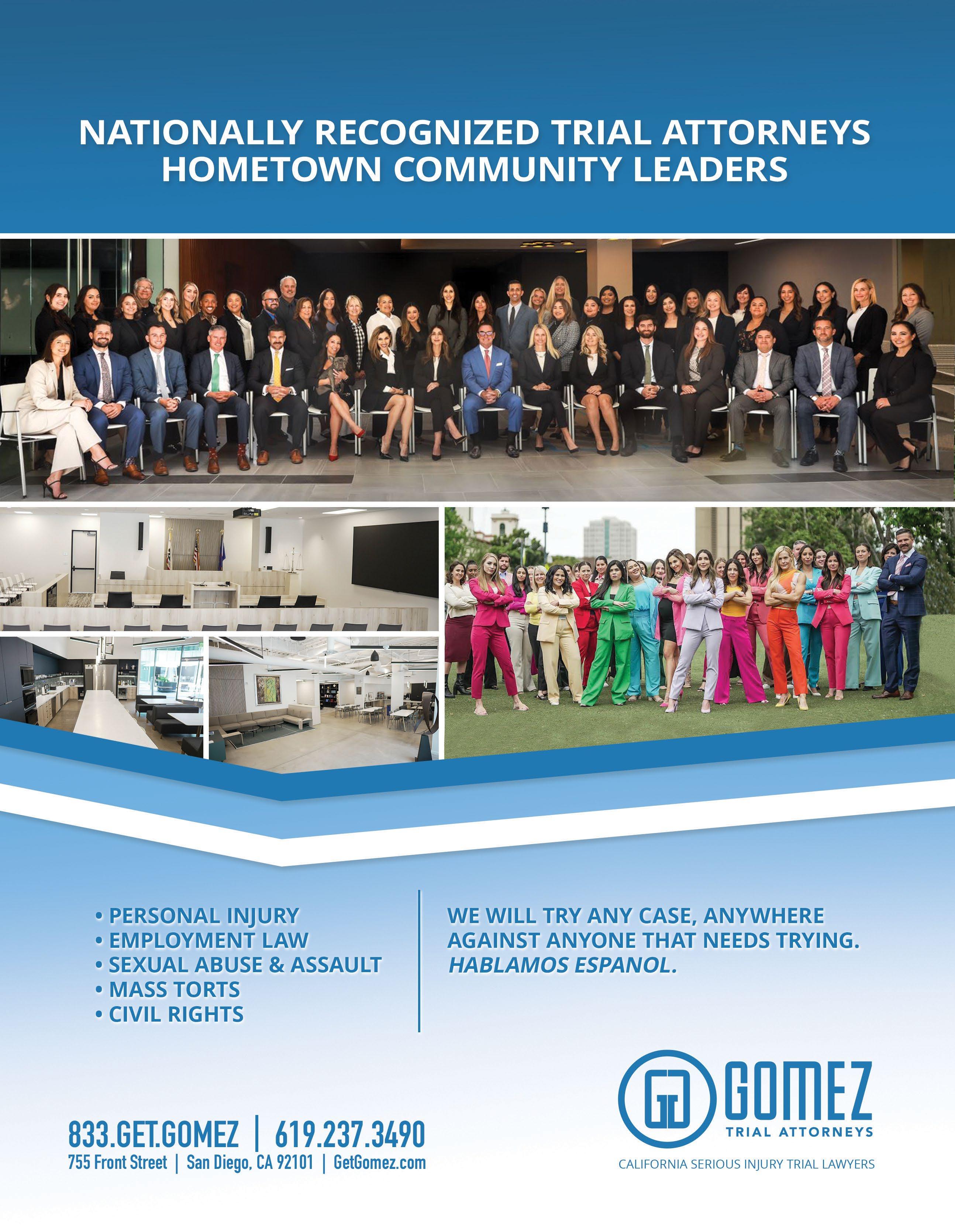

Some things appear to be so simple that we assume (dangerously) that everyone “gets it.” Bear with me a moment.
For lawyers, it is imperative to consistently and persistently cultivate, nurture and strengthen their relationships with their universal network; with clients, to receive more work; with referral sources, to receive more referrals; with prospects, to develop new work; and so on.
Then why is it that a significant number of lawyers either have no system—formal or otherwise—for getting and staying in touch with these people or do a dismal job of staying connected?
What Does “Getting And Staying In Touch” Mean?
Again, a seemingly obvious question, but in my legal marketing practice of more than 20 years, I have yet to encounter more than a handful of lawyers who understand, as a practical matter, the fundamental principle of this phrase.
Starting with the widely known statistic that it takes from 7-10 “touches” annually to stay “top-of-mind,” lawyers are well served to develop—often with the support of their legal secretary/assistant/marketing or IT department—a consolidated contact list including clients; industry and professional contacts; referral sources; prospects; friends and family; school classmates—law school, college, high school, etc.; co-workers and former coworkers; contacts from former clerkships; association contacts; community contacts; holiday card recipients; and so on.
Though it may be an arduous administrative task to assemble all the business cards, old Rolodexes (yes, I’m showing my age), database printouts, etc., it is important to have all your contacts in one system.
As I often relay to my clients, no list equals no connections, no communications with friends, peers, industry contacts and prospects, and, ultimately, no clients. Remember, we’re in the “relationship-building” business, and it becomes much more daunting to foster relationships if we don’t proactively get and stay in touch.
While I could outline the precise steps lawyers need to take in assembling, organizing, categorizing and systemizing their contacts, I’ll spare the reader the administrative details in this
Nurturing Relationships— Building Business by Staying in Touch
by Kimberly Alford Rice
article except to point out that once the task of gathering and entering all your contacts into a central system—even Microsoft Outlook does a decent job of this—is complete, lawyers would be sorely remiss if they did not “categorize” their contact names.
What Does This Mean?
For purposes of communicating regularly with your various constituents (clients, referral sources, prospects, etc.), no one communication message will be of interest to everyone on your contact list. That is to say, if you develop an e-newsletter or legal update on the importance of developing social media policies for the workplace and send it to your human resource clients, that topic may be of little interest to your charitable organization contacts unless they are involved in employment law issues. Basically, you want to tailor your message to an intended audience and there is no better way than to develop “categories” of contacts.
When it comes to knowing how, when and how often to reach out, paramount on most attorneys’ minds is that they do not want to be perceived as “too pushy,” “aggressive” or otherwise annoying. Understandable. One principle I often convey to my clients is that most people are so involved in their own world, business, family, etc., you are not capturing 100 percent of their attention most of the time. In other words, to adequately “register” on your targets’ radar, there must be regular, consistent and persistent “touch points,” be they via e-mail, phone call, face-to-face contact (for which there is no substitute) and social media outlets, just to name a few.
Check Motivations
To build and grow a healthy practice, it is imperative to develop a system of getting and staying in touch but doing so with the appropriate mindset. In short, “It’s not about you.”
Lawyers often ask me: “What is it that I’m saying to all these people?” Lawyers sometimes say, “I don’t want to bother these folks,” and express other such sentiments.
My response is usually a variation on the theme of reaching out with a helpful spirit and with true intentions of checking in on your contacts’ business, seeing how they are making out with a recent transition or starting a new position, or a
Attorney Journals San Diego | Volume 246, 2024 28
company move, etc. The universal sowing of seeds of goodwill will certainly reap only good things. Or, said another way, employing Newton’s Laws of Motion, “For every action, there is an equal and opposite reaction.” The more “goodwill” you put out, the more it will come back to you ... usually multifold.
Time Considerations
Attorneys are very busy people, often logging their time in sixminute increments. Where do they “find” the time to get and stay in touch with everyone and have the oft-needed downtime?
Just today, I explained to a junior partner client that, if addressed productively, his contacts will soon be in his personal network circle. Think about it: We all have certain people with whom we enjoy sharing time. What if those special people could be the same people in your categorized contact lists? How cool would that be? Kill two birds with, well, you know.
For the successful senior attorneys among us, many of you have worked most of your professional careers to create this very scenario. But it didn’t happen overnight. It took years, in some cases, one contact at a time. This brings me to my next point.
Leverage Technology
In our global Internet age, it has never been easier to “get and stay in contact” with a broad base of contacts via the technological tools available (e.g., LinkedIn, Facebook, Twitter, blogging). Not a technophile? No sweat; there are “people” who make a career of helping clients “connect.” One such job title is “certified social media specialist.”
Net-Net
In the growing competitive legal services arena, cultivating strong relationships is more important than ever before. As a successful lawyer and business owner, you must find a way to get and stay in touch with your desired audiences, targeted constituents and those folks who ultimately can help you grow a healthy practice. It is most easily done by:
• Committing to making it happen.
• Gaining buy-in from your support resources (internal and/ or external) so everyone is on the same page.
• Developing a viable and workable system for gathering, categorizing and maintaining contacts on an ongoing basis.
• Scheduling dates/calendar regular communication with your contacts in addition to the other regular “touches.”
• Repeat. n

Kimberly Alford Rice is Principal of KLA Marketing Associates (www.klamarketing.net), a business development advisory firm focusing on legal services. As a law marketing authority, Kimberly helps law firms and lawyers develop practical business development and marketing strategies which lead directly to new clients and increased revenue. Additionally, Kimberly founded Women in the Law Rainmaker Forum to provide women lawyers guidance in professional and career management issues. She may be reached at 609.458.0415 or via email at kimberly@klamarketing.net

Attorney Journals San Diego | Volume 246, 2024 29
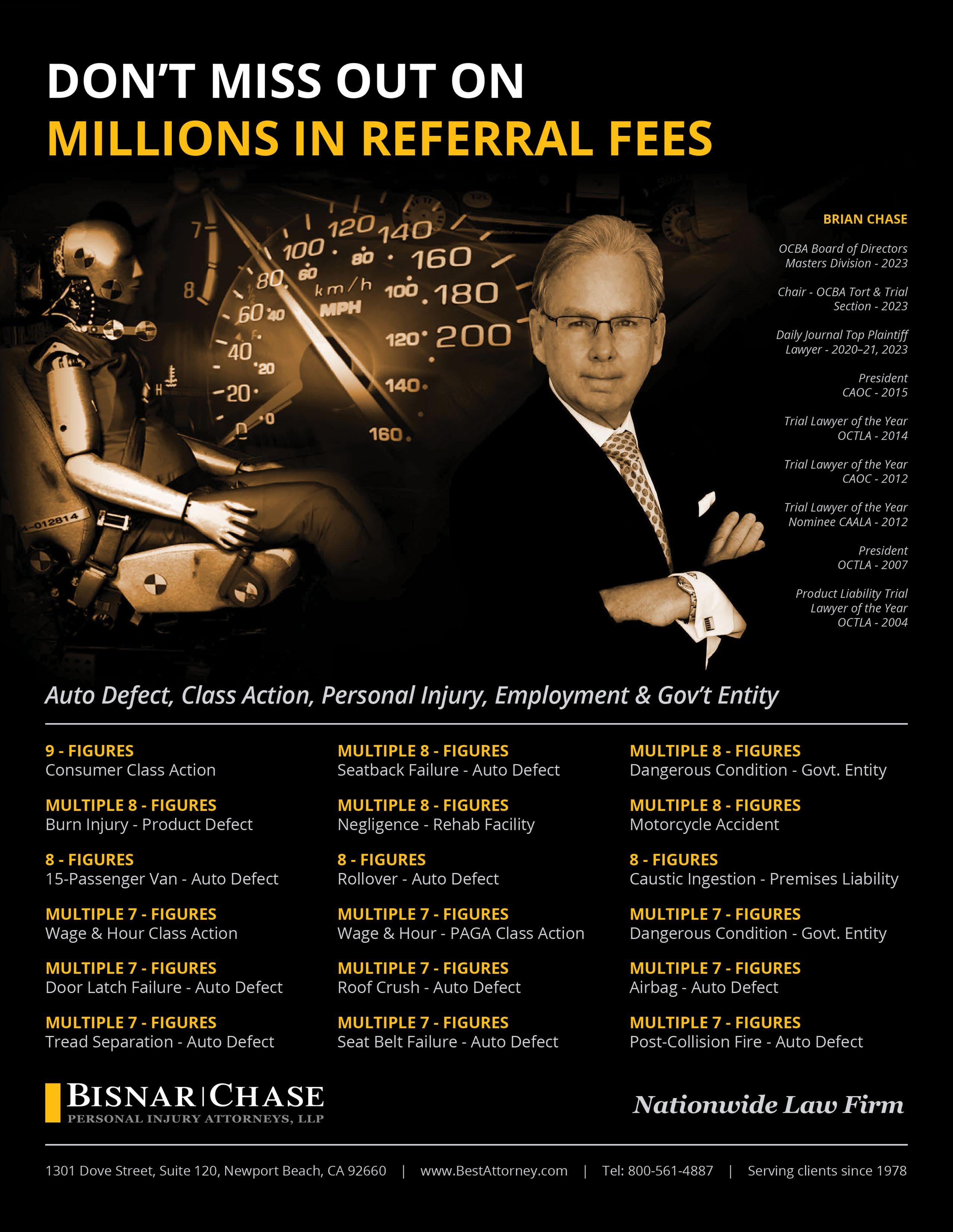

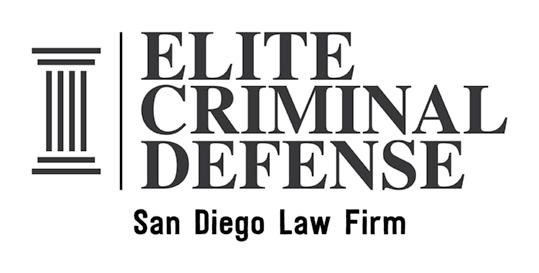
San Diego’s Top Criminal Defense Law Firm The
Criminal
Award Winning • Proven Results • 20 Years Experience Your Trusted Legal Advocates in San Diego Our commitment to justice, relentless advocacy, and unwavering support for our clients sets us apart. We understand the complexities of the legal system and are dedicated to protecting your rights. Areas of Expertise: • Assault and Battery • Assault with a Deadly Weapon • Attempted or First-Degree Murder • Burglary • Carrying a Concealed Weapon • Domestic Violence SAN DIEGO OFFICE LOCATIONS: 8880 Rio San Diego Drive, Suite 800 San Diego, CA 92108 3111 Camino Del Rio N, Suite 350 San Diego, CA 92108 EliteCriminalDefense.com 858-758-1503 • Drug Trafficking • DUI • Hit and Run • Possession with the Intent to Sell REFERRAL FEES PAID
Elite
Defense
Team: John Delisi, Jewel Peavy, Manuel Scribner, Oscar Valencia, Ryan Filippone and Adriana Jimenez.
We’ve Got Nevada Covered Too.
MEET OUR NEVADA LICENSED ATTORNEYS




















We invite you to visit our Las Vegas office, located across the street from the Courthouse, where we offer attorneys use of our full courtroom to conduct focus groups, mock trials, and witness preparation.
Panish | Shea | Ravipudi LLP attorneys fight every day to obtain justice for our clients and make a difference in their lives. But our expertise in personal injury litigation doesn’t stop at the California state line.
With 20 attorneys licensed in Nevada, we have obtained record results in the state. The firm welcomes all joint venture opportunities, including with attorneys who want to stay more actively involved in a case.
|
877.800.1700 panish.law STRENGTH BY YOUR SIDE ®
CALIFORNIA
NEVADA PRSRT STD U.S. POSTAGE PAID PERMIT # 100 CLAREMONT, CA



























































 © Bauman Photographers
The Nawaey Family
© Bauman Photographers
The Nawaey Family







































